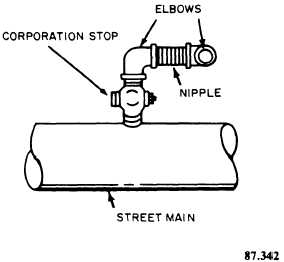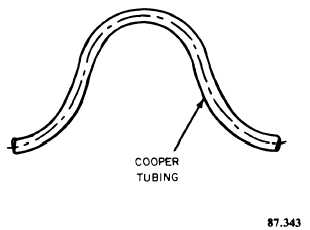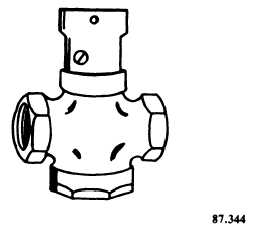pipe is used as the supply line. It consists of a length of copper pipe with fittings wiped or soldered on each end. Another flexible connector is the swing joint type commonly used with galvanized iron or steel service lines. (See fig. 7-6.) This connection consists of two elbows separated by a short section of pipe or a nipple. Next is the expansion loop (fig. 7-7) used when copper tubing is used as the service line.
A curb stop must be provided in every service line to conform to the National Standard Plumbing Code, paragraph 10.12.1. (See fig. 7-8.) The curb stop provides an accessible shutoff of the water supply to the building.
Next, a stop and waste valve (fig. 7-9) will be installed to conform to the National Standard Plumbing Code, paragraph 10.12.2. This valve

Figure 7-6. - Typical swing joint.

Figure 7-7. - Expansion loop.
is used to drain the building water system. It must be installed at a point where drainage by gravity can be achieved. When the valve is turned off, drainage will occur through a drilled passage in the valve body.
Finally, a meter stop is installed when a water meter is to be included in the service line (fig. 7-10). It is installed on the pressure side of the meter and can be used for convenient securing of the water supply to the building. Where no meter is used, a simple gate valve may be provided for convenient use when repairing or maintaining the building water lines.
Each fixture to be installed requires a fixture stop valve and a certain size branch and riser piping. Branch lines are calculated in the same fashion as service supply lines. Risers for each

Figure 7-8. - Curb stop.

Figure 7-9. - Stop and waste valve.
Continue Reading